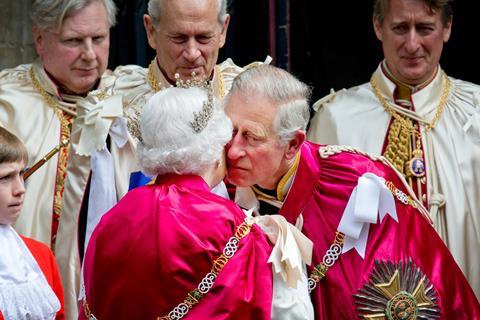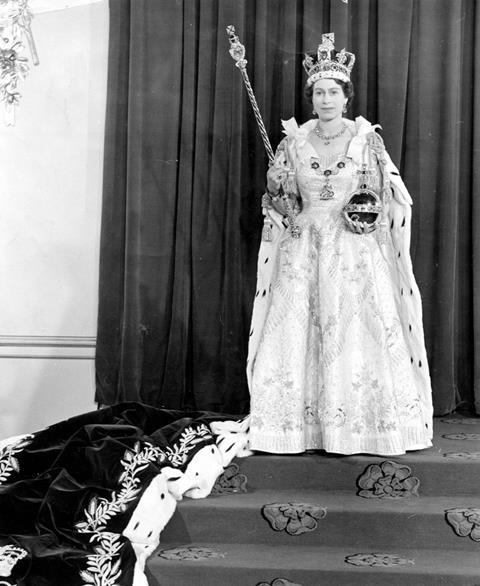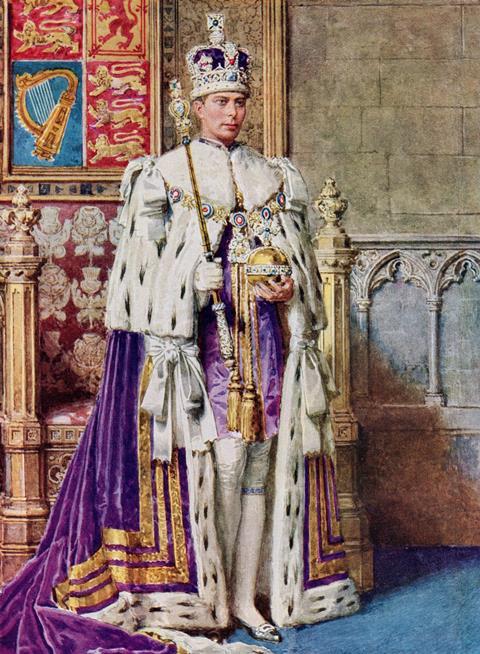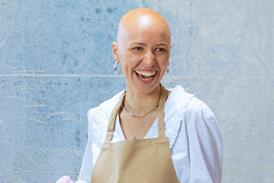Many of us will be watching King Charles III’s coronation on Saturday 6 May at Westminster Abbey in London, but what does it all mean? Author Catherine Butcher explains the Christian symbolism at the heart of the event

When I first saw the crown jewels on display in the Tower of London, I was struck by the common theme: the cross adorns many of the pieces of coronation regalia. That prompted me to look more closely at the coronation ceremony. My conclusion: the coronation is inescapably Christian and a unique opportunity to talk about faith.
Much of the coronation can be traced to the ceremony devised by St Dunstan for King Edgar’s coronation in 973 AD. Most of the symbols, the words and the music deliberately link the event with Christian themes and stories in the Bible. The event takes place in a Christian church and is similar to a priest’s ordination. It is conducted by the Archbishop of Canterbury, and there are prayers, hymns and Bible readings as well as promises made before God.

Royal robes
In the past, kings have worn silk stockings and breeches for coronations. King Charles III is more likely to wear his military uniform throughout the ceremony, but there are some symbolic robes with priestly connotations, which have changed little since the Middle Ages, that are still likely to be used. These include the Supertunica (a long, wide-sleeved vestment used as liturgical dress by some Christian churches); the Stole Royal (a narrow band of gold silk like a priest’s stole or scarf worn over the Supertunica); and the Robe Royal (an ornately embroidered gold cloak based on priestly robes).
The monarch wears the Robe Royal while the crown is placed on his or her head. Both the Supertunica and Robe Royal are removed before the monarch processes out of the Abbey, wearing the Robe of State, the Imperial State Crown and carrying the Sceptre and the Orb.

Anointing
Although most people might think that the crowning is the highlight of the ceremony, it is in fact the anointing with oil that is the supreme moment. The sovereign is anointed, blessed and consecrated by the Archbishop of Canterbury; an act considered so sacred that it was not shown when the last coronation was televised.
Traditionally Christian kings have been anointed throughout history, marking them as God’s servants, empowered by his Holy Spirit. When the late Queen was anointed her royal robes were covered with a simple white dress to show that she was coming to God as an ordinary person needing his help; dying to self and rising in the power of God’s Holy Spirit. The white dress is known as the Colobium Sindonis, which translates from Latin as ‘Shroud Tunic’.
The anointing oil for this coronation has been created using olives from two groves on the Mount of Olives at the Monastery of the Ascension and the Monastery of Mary Magdalene, the burial place of His Majesty’s grandmother, Princess Alice of Greece. Historic anointing oils have included products from whales and civet cats, but this anointing oil is made of olive oil, sesame, rose, jasmine, cinnamon, neroli, benzoin and amber as well as orange blossom, without any oil from animals.
The Archbishop of Canterbury suggested that this new oil should be created partly to honour the King’s personal connections with Jerusalem and partly to highlight the links between the coronation, the Bible and the Holy Land. Archbishop Justin commented: “As we prepare to anoint the King and the Queen Consort, I pray that they would be guided and strengthened by the Holy Spirit.”
For the coronation anointing, the oil is poured from the golden eagle-shaped jug, known as an ampulla, onto a golden spoon, which is at least 700 years old and has been used for the crowning of every king and queen since the 1600s. The Archbishop will use the oil to anoint the hands, breast and forehead of the King and Queen Consort.
Bible links
The anointing links the ceremony directly with the Bible, where we read that “Zadok the priest and Nathan the prophet anointed him (Solomon) as king” (see 1 Kings 1:38-39). These words have been used at every English, and later British, coronation since 973 AD, linking the act of anointing with its biblical roots.
In the apostle John’s vision of heaven in the book of Revelation, he saw: “a great multitude that no one could count, from every nation, tribe, people and language, standing before the throne” (Revelation 7:9). Coronations seem to have been designed to evoke visions of heaven, and that day when we all stand before God’s throne.

Signs and symbols
Although the King will be presented with some of the world’s most valuable gems at his coronation, he will also receive a Bible, which was described at his mother’s coronation as “the most valuable thing that this world affords”. These are the other significant symbolic objects in the regalia that will be used:
St Edward’s Crown, made for King Charles II in 1661, is topped by a cross surmounting a globe. This symbolises the authority of Jesus Christ over the whole world.
The Imperial State Crown, decorated with 3,000 precious stones, is also surmounted by a cross over a globe.
The Orb, also made in 1661, is a globe of gold surmounted by a cross decorated with diamonds, emeralds, rubies, sapphires, pearls and a large amethyst. In the words from the last coronation: “When you see this Orb under the cross remember that the whole world is subject to the power and empire of Christ our Redeemer.”
The coronation ring, known as ‘The Wedding Ring of England’ features a cross made of rubies surrounded by sapphires and diamonds.
Sceptres: A cross tops one of the sovereign’s sceptres, which represents earthly authority in the service of God. The Sceptre with the Dove, representing the Holy Spirit, is sometimes known as the Rod of Equity and Mercy, and demonstrates the sovereign’s spiritual authority.
Swords: Four swords are used during the coronation processions including the Sword of State, symbolising Royal authority, which is used at the state opening of Parliament; the Sword of Temporal Justice, signifying the monarch’s role as Head of the Armed Forces; the Sword of Spiritual Justice, signifying the monarch as Defender of the Faith, and the Sword of Mercy or Curtana, with its tip broken 15cm from the end, symbolising the sovereign’s mercy.

Catherine Butcher is the author of Our Faithful Queen published by Hope Together. For King Charles’ coronation Catherine has devised a large-format, full-colour, gift book called Crowned King, which includes a 12-page explanation of the coronation and a contemporary version of Matthew’s Gospel. Find out more at hopetogether.org.uk

































No comments yet